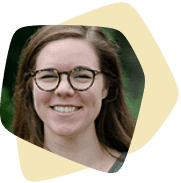Share this article
TWS Symposium Looks at Regulated Use of Wildlife
TWS’ annual conference addressed several issues the wildlife profession will face in the coming years. During the day-long symposium event Wildlife Conservation’s Dilemma: Fur, Feather, Fins, Steel, and People, speakers from many different disciplines within the wildlife profession discussed issues that revolved around the shifting attitudes on the regulated take and capture of wildlife.
A predominant topic within the discussion of regulated take was the North American Model of Wildlife Conservation. The regulated take of wildlife is a thematic element of the model, and has been an important foundation for wildlife conservation programs that operate in America.
Given the declining role of hunting and angling in many Americans lives through time, many symposium speakers focused on the place of the North American Model in today’s society. Dr. John Organ, CWB®, Chief of the U.S.G.S. Cooperative Fish and Wildlife Research Units and a Past-President of TWS, encouraged professionals to not focus on the model itself, but instead on the legal and policy principles not encompassed within the model, such as private lands incentives and legal protections for imperiled species, in order to meet future conservation challenges.
Other speakers, such as Dr. Cynthia Jacobson, Assistant Regional Director for USFWS Office of Science Applications, and Dr. Ken Williams, Executive Director of TWS, spoke about the model as an important foundation, but one in need of adaptation as attitudes and values change.
According to Dr. Williams, “It would be a mistake for us to think of the North American Model as fixed and invariant through time. We must think of it as a living document.”
Dr. Williams went on to state the model must be relevant within a broader context than just hunting, a sentiment echoed throughout the symposium when discussing funding shortfalls that lie ahead for wildlife conservation programs as the hunting and angling fees these programs rely on continue to decrease. Speakers such as Director Larry Voyles, CWB®, and Branch Chief Scott Lavin of the Arizona Game and Fish Department talked about the need to seek out additional funding sources from public land users. Lavin advocated for these new funding sources, such as non-extractive uses like wildlife-viewing, and urged professionals to do a better job relaying interesting wildlife stories to laypeople in order to spark interest and increase revenues.
Ideas on how to spark interest and support among the general public as well as how to provide the public with a better understanding of the benefits of regulated take were also major themes from speakers of the event. This included Dr. William Siemer, CWB®, a Research Associate at Cornell University, who presented his research on how different demographics perceive regulated hunting. Siemer found that regulated hunting for motives such as a desire for meat and to reduce human-wildlife conflict should continue to play a role in the future of wildlife management, as they are more widely accepted among the general public than motives such as forms of trophy hunting.
While changes to funding mechanisms and interactions with the public need to be addressed to help ensure the future of the profession, major changes need to be addressed within the profession itself. As pointed out by Dr. Zach Lowe, Vice President of the Center for Conservation Leadership at the Max McGraw Wildlife Foundation and Director of Conservation Leaders for Tomorrow, many professionals are entering natural resources positions with a lack of experience and training on the regulated take of wildlife. This point was further driven home by Northern Arizona University Professor Carol Chambers, who discussed the need to understand that today’s wildlife professionals are teaching wildlife students who are very different than themselves. These students, many of them starting their university education with fewer outdoor experiences than their predecessors, would fare best with a flexible, multi-faceted curriculum.
By the end of the symposium, audience members walked away with the overarching message that the North American Model of Wildlife Conservation and the broad ideas surrounding the regulated take of wildlife are important topics for the future of the profession, but that adapting the model to social and environmental changes will be needed to maintain its relevance going forward.
Read TWS’ Standing Position Statement on the North American Model of Wildlife Conservation.
Learn more about the North American Model of Wildlife Conservation by checking out TWS’ Technical Review.
Header Image: Image Credit: Tony Rocheford, USFWSmidwest, licensed by cc 2.0








